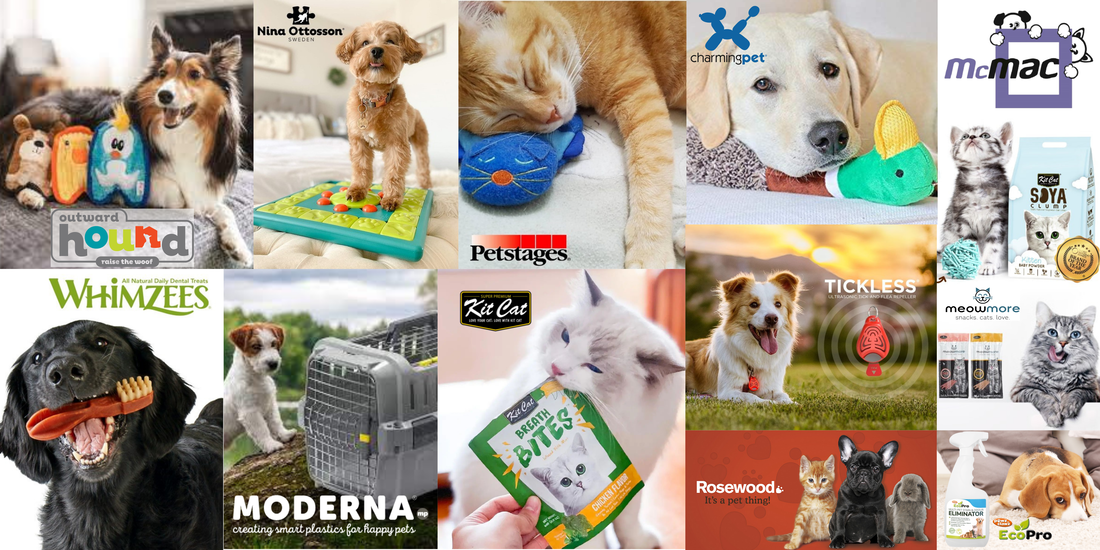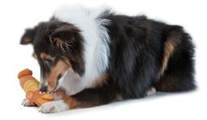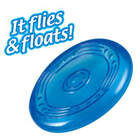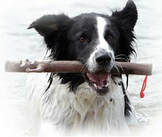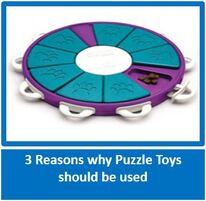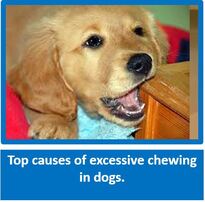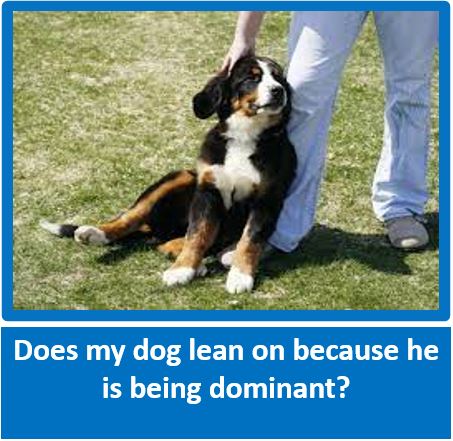If you thought that every dog came with an automatic Fetch – think again!
You may have hit it lucky and have a dog with a natural retrieve, or your may have tried to play this great game with your new dog or pup, only to discover that he turns and looks at you as if ‘you want me to do what?”
Sometimes it is not that the dog does not enjoy retrieving objects, it could well be that there is another dog in the house, and any attempts to retrieve have been stopped short by the other dog. If this is the case and you want to teach this dog to Fetch, then put the other dog away in another area of the home, with a lovely Kong or Busy Buddy to chew on, while you work with the other dog. Do the training in short sections as below.
Before we show you how easy it can be to teach this, here are a couple of reasons why we believe every dog should learn how to play
Be careful what objects/items used for fetch - avoid natural sticks at all cost. It is not unusual for a dog to be carrying a stick, and it accidentally gets stuck into the ground, which results in the stick going upwards and into the top of the dogs mouth or even throat - this has resulted in some dogs needing emergency surgery and even dying. We prefer to use high quality throw toys where the toy has no BPA, Phthalates, Hormones, Lead or Latex, and is also strong and cannot hurt gums or teeth.
Before we go into the 'how to', do not let this game become obsessive where your dog is concerned, especially the working breeds. Once learnt, Fetch should be played on your terms and the favourite object used, put away when the game is over. This keeps the dog motivated and gives the owner added importance.
How To
Whatever situation you have, take heart, you should be able to teach your dog this game, but it will take a bit of time and total consistency.
Many owners start the game of Fetch by just throwing the object for the dog. If the dog is not a natural chaser, the odds are that it will ignore the object. Think how dogs go after prey - normally prey is running on the ground, so this is where we will start. There are many different ways to teach Fetch to your dog, however, we find that the method below is the easiest.
Once your dog gets the hang of this wonderful game, then start to try other objects. What must always be borne in mind, is that dogs leaping up too high in the air and coming down hard, especially on rough ground can result in injuries to the cruciate ligaments. This does not mean you should not play this game, it just means be careful, just as you would be if playing yourself!
Here are some pictures of our 3 favourite Fetch Toys which we use for our own dogs, as they are sturdy, long lasting and made from safe materials - you can view these and others at www.mcmac.co.za
You may have hit it lucky and have a dog with a natural retrieve, or your may have tried to play this great game with your new dog or pup, only to discover that he turns and looks at you as if ‘you want me to do what?”
Sometimes it is not that the dog does not enjoy retrieving objects, it could well be that there is another dog in the house, and any attempts to retrieve have been stopped short by the other dog. If this is the case and you want to teach this dog to Fetch, then put the other dog away in another area of the home, with a lovely Kong or Busy Buddy to chew on, while you work with the other dog. Do the training in short sections as below.
Before we show you how easy it can be to teach this, here are a couple of reasons why we believe every dog should learn how to play
- Stimulates natural chase instinct
- Builds a good bond with owner
- Provides exercise when owner does not have the time to take the dog out.
- Can also be played inside the home, when weather inclement, using a soft toy for retrieve.
- If also taught in a structured manner can serve as a training aid, but do not abuse this aspect, it should be a fun game. If using as a training aid, good idea to keep certain toys only to use in this aspect - such as a Frisbee or ball for great fun, and a dumbbell, for example, for when structured work is done.
- You can even teach your dog to go and fetch your slippers and bring them to you - thereby giving the dog a 'job' to do, however make sure slippers will not be eaten!
- Provides both mental and physical stimulation.
Be careful what objects/items used for fetch - avoid natural sticks at all cost. It is not unusual for a dog to be carrying a stick, and it accidentally gets stuck into the ground, which results in the stick going upwards and into the top of the dogs mouth or even throat - this has resulted in some dogs needing emergency surgery and even dying. We prefer to use high quality throw toys where the toy has no BPA, Phthalates, Hormones, Lead or Latex, and is also strong and cannot hurt gums or teeth.
Before we go into the 'how to', do not let this game become obsessive where your dog is concerned, especially the working breeds. Once learnt, Fetch should be played on your terms and the favourite object used, put away when the game is over. This keeps the dog motivated and gives the owner added importance.
How To
Whatever situation you have, take heart, you should be able to teach your dog this game, but it will take a bit of time and total consistency.
Many owners start the game of Fetch by just throwing the object for the dog. If the dog is not a natural chaser, the odds are that it will ignore the object. Think how dogs go after prey - normally prey is running on the ground, so this is where we will start. There are many different ways to teach Fetch to your dog, however, we find that the method below is the easiest.
- Take an old sock which would fit to about mid thigh (or quietly pinch one of your husbands!) and inside it, put in a soft ball, which you have smeared with something like liver paste or put in some pieces of biltong at the toe of the sock - or both - this will make it much more appealing to the dog.
- The size of the ball will depend on the size of your dog. At this stage, we do not recommend a squeaky ball, as not all dogs are comfortable with these. Tie a loose knot to secure.
- Have a handful of high value treats with you.
- Kneel down on the floor with your dog, and slowly put the sock with the ball on the floor in front of you and move it slowly, saying something like 'get it, get it' in an excited tone of voice.
- The second your dog even looks at the sock, praise and offer a treat. Do this several times in a row and most dogs will start to get excited and try to touch the sock. Keep on praising and treating.
- At this stage stop! Yes, you will quit while you are ahead, put the sock away, and perhaps try this later in the day or the next day. This stops the dog getting bored and keeps the dog interested.
- Next time you are practicing, do the exact same and see if the dog will attempt to start grabbing the sock. As above, keep on praising and treating for the behaviour you want.
- The amount of time this takes, will depend on the individual dog, but don't give up. You are going to keep on doing this until the dog starts to hold onto the sock and you then start to give a little pull.
- Here, take it a step further - before the pulling becomes too strong, gently pull the sock back towards you, offer a high value treat while the dog has the object in its mouth, and say Swap or Thank You. Your are now teaching your dog to release the object - easy hey! Do this several times and then put the object away.
- As your dog becomes better and better, you can add on a piece of rope to the sock, and start to toss it about a foot away - at the same time as you toss, say 'get it' in an excited voice - yes you are reinforcing the 'get it' cue and remember to say the 'thank you' or 'swap' when your dog brings it back - we are teaching while having fun at the same time. As above practice for a while and put away.
- You will gradually increase the distance using your 'get it' and 'swap' cues, and in no time at all, you will have a dog that will be happy playing the Fetch game, and when this happens, you can start to take the ball out of the sock and again, you will go back to the beginning, and just toss the ball a little bit away from you and gradually build up as before.
Once your dog gets the hang of this wonderful game, then start to try other objects. What must always be borne in mind, is that dogs leaping up too high in the air and coming down hard, especially on rough ground can result in injuries to the cruciate ligaments. This does not mean you should not play this game, it just means be careful, just as you would be if playing yourself!
Here are some pictures of our 3 favourite Fetch Toys which we use for our own dogs, as they are sturdy, long lasting and made from safe materials - you can view these and others at www.mcmac.co.za
|
Lil Squeak Monkey - for those dogs that prefer a softer toy. Invincible squeakers and lots of other benefits |
Orka Flyer - this is an all time favourite that floats and does not have sharp edges that can't cut gums
|
Doog sticks - lots of different types, with eyes that glow in the dark, dont splinter that wont hurt the gums and also float
|

